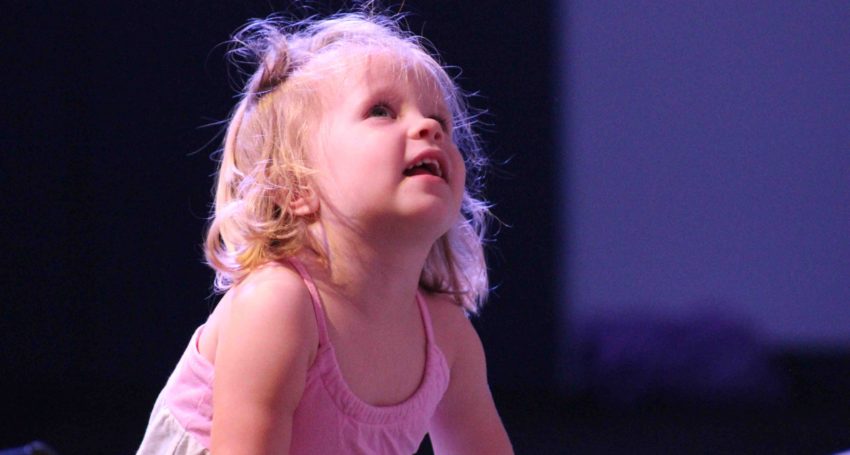Developing worship in children's ministry
Features
“I invite you to look at the children in your worship ministry. What are their hobbies and interests? How can you engage them in God’s presence?” asks primary school teacher, mum and kids’ worship ministry leader Penny Howchin from Resource Church St Andrew’s, Springfield

Encountering God’s presence through worship changes a person forever. It takes the Christian walk from a head full of Bible knowledge to a heart and life changed by God’s love. Worship is focusing exclusively on God and connecting with His heart. It is crucial to developing a relationship with Him. Through worship, God’s hand moves to bring healing, encouragement, peace and love to His believers and the world. Without worship, we can end up with empty religion.
Advertisement
Developing a worship culture in our children’s ministries is paramount. Children’s ministry programmes often focus on Bible knowledge alone. While this is important, children also need to develop their personal relationship with Jesus by spending time in His presence talking and listening to Him. This makes the relationship real and something they will hold onto for life.
Music is the most common form of worship. It is, after all, the language of the heart. We are repeatedly commanded in the Bible to sing and make music to God with our voices, instruments, clapping, shouting and dancing (Psalms 33, 47, 95, 100, 149, 150). This is why I love to use fast ‘action songs’ with kids. All children love songs with electric ‘air guitar’ and strong dance moves. From an educational perspective, it engages all the different learning styles: movement for the kinaesthetic learners, words on the screen for the visual learners and singing for the verbal/oral learners.
Yet music isn’t the only way to worship. If worship is focusing mind, body and spirit on God, then there are many avenues to doing this. Not all children are musical, so we need to ensure we are providing opportunities for all our children to engage. As an example, my 8-year-old son prefers to worship God by sitting quietly in God’s creation, telling Bible stories with Lego, or even by running laps around the room for Jesus! Not always practical, but his heart is genuinely praising God.
Related Story
 Features
Features
How to run an effective and engaging Sunday children’s ministry
I invite you to look at the children in your worship ministry. What are their hobbies and interests? How can you engage them in God’s presence? Perhaps colouring memory verse sheets or drawing what God has been teaching them during a quiet worship song will engage the art lovers. Try writing praise words on balloons and having a worship dance party hitting them around the room to a loud song. Use colourful sticky notes to create a praise wall of things the children are thankful to God for.
Top 10 tips for cultivating worship in your children’s ministry
- Model worship. It’s a tricky balance to worship and manage behaviour at the same time, but you can’t lead the kids into God’s presence if you’re not going there yourself. If possible, get other leaders to manage behaviour during this time.
- Know your material. It’s hard to enter God’s presence if you’re busy trying to remember the dance moves or what comes next. Either use a video to lead it or practise at home.
- It’s also really hard for kids to enter God’s presence if things aren’t familiar. I would pick a set list of about six songs per school term and use only those. During the next term I’d drop two and add two. That way the kids are familiar with enough of the songs and able to engage, while learning additional songs.
- Expect engagement. Posture is important and reflects the heart, so I usually expect children to stand and engage in dancing and singing. At other times I give them freedom to worship how they want to, provided they are focused on God and not distracting others.
- Mix it up. Within your regular routine, mix up what worship elements you use. Perhaps choose one song followed by a drawing activity. Try a balloon or glow stick dance party before a quiet worshipful song.
- Engage with the musical style kids are in to. Children today are specifically targeted with world-class sound tracks in movies, on TV shows and on the Internet. Unfortunately songs from 50 years ago don’t necessarily have the same impact and relevance they once did. Select high quality, modern music.
- Select suitable songs. Different songs are best used for different purposes within a children’s ministry context. Some are great for teaching Bible stories, others for atmosphere during a game or craft, and some are best for worshipping God and engaging in His presence. Use the right song for the right purpose.
- Check the vocabulary and concepts. Check the songs you want to use. Are there words that need explaining? Are the concepts relatable to kids within their sphere of understanding and life experience?
- Keep things moving. In the radio industry silence is carefully avoided. It’s called ‘dead air’ and becomes an opportunity for listeners to switch off. When we have ‘dead air’ during song transitions in our worship times, children also switch off. Silence focused on God is a wonderful thing, but silence because you are having trouble finding the next track or prop for your lesson can lead to children disengaging.
- Remember Psalm 8.2. “Through the praise of children and infants you have established a stronghold against your enemies.” The praises of our children are powerful!
For further information and ideas or a list of songs that I have used and found effective, email me at pennyhowchinkidsworship@gmail.com or visit my website.





